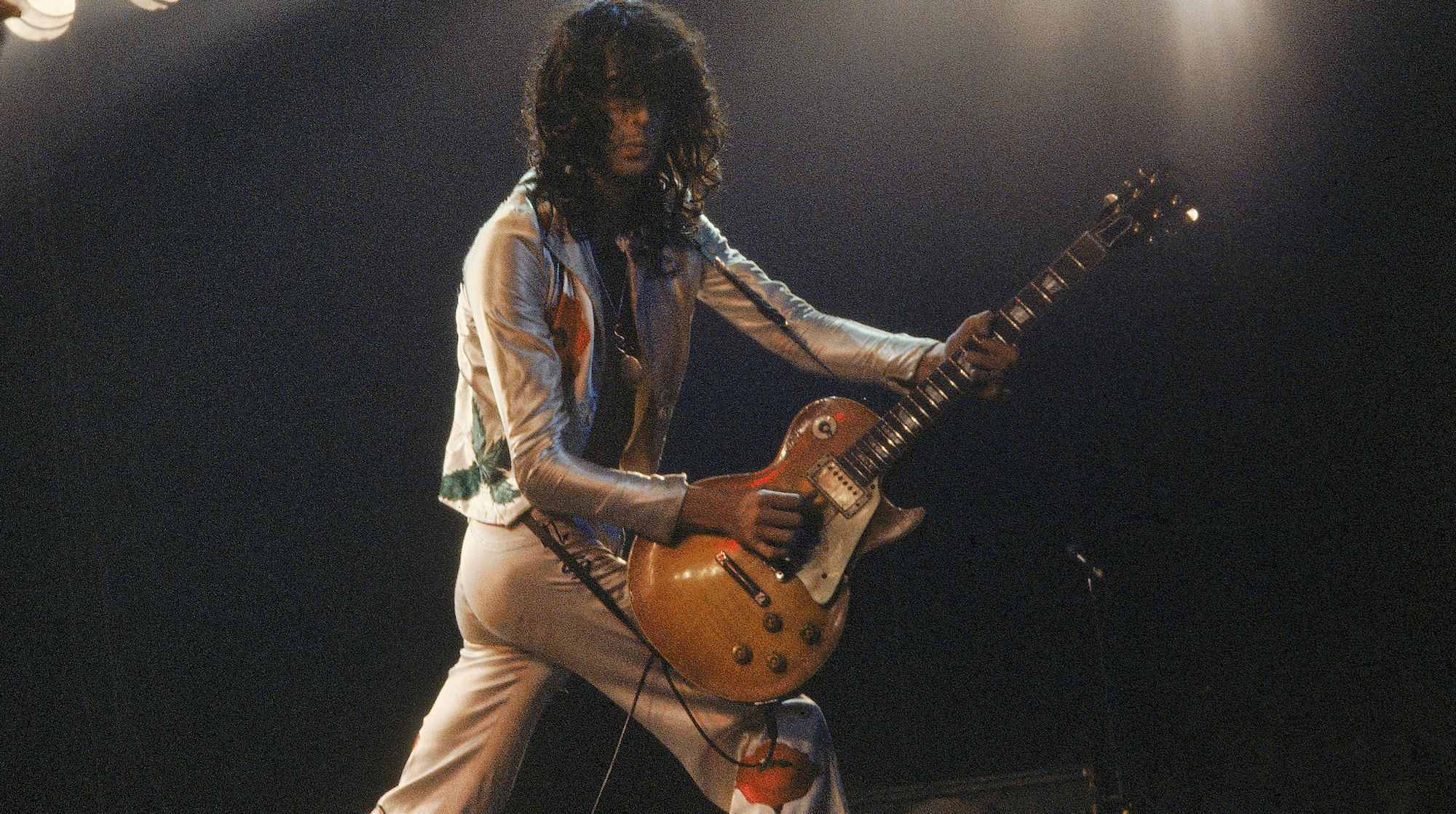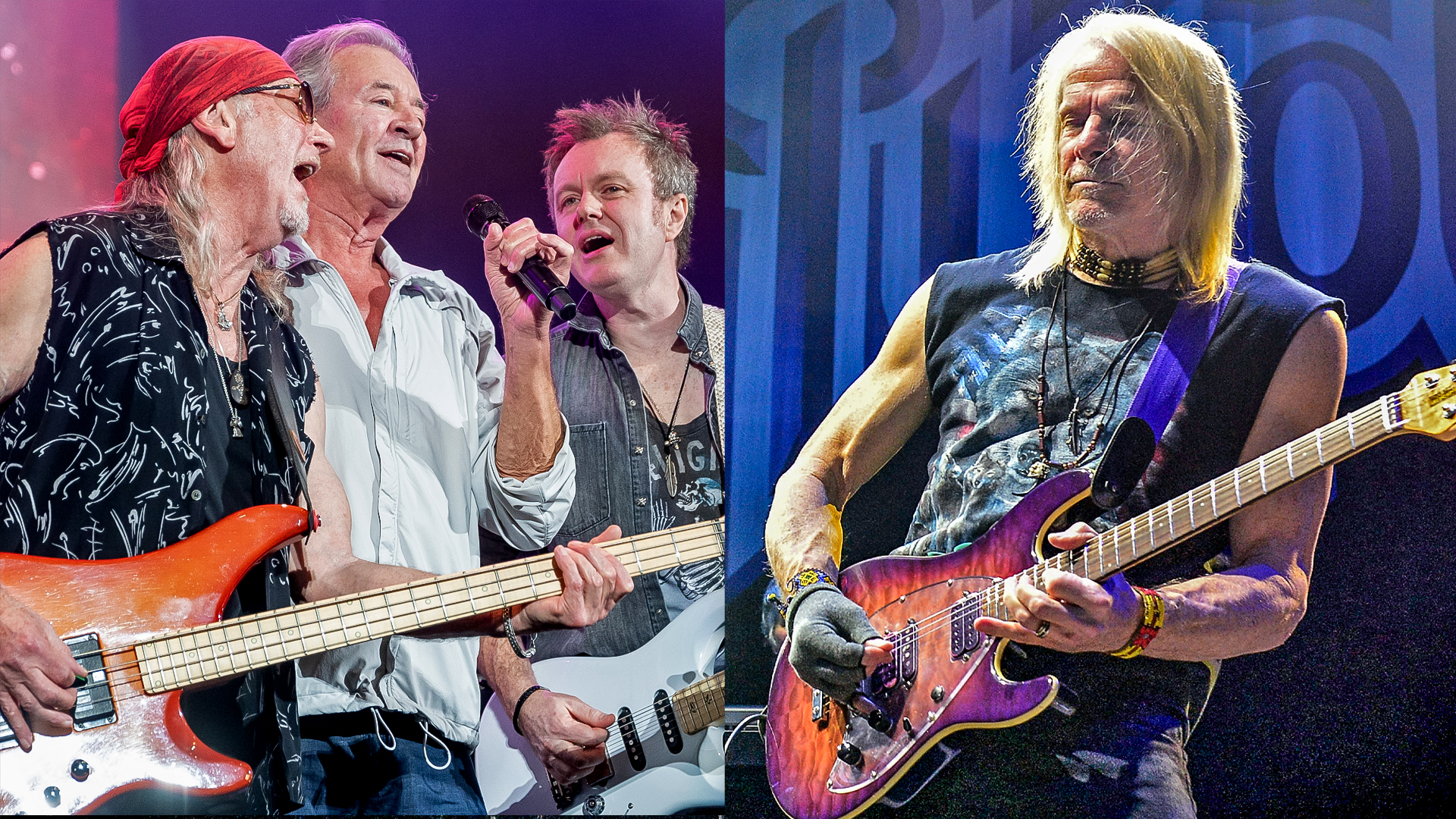Jimmy Page Reveals His "Whole Lotta Love" Amp
The Led Zeppelin legend discussed his early rigs at length in an in-depth interview with Total Guitar.

To promote his new Anthology photo book, Jimmy Page recently sat down for an interview with Total Guitar’s Chris Bird.
The wide-ranging, 17-page chat covered a multitude of topics, including the rigs that fueled Led Zeppelin’s earliest albums. Of particular note in the discussion was Page's elaboration on how his switch from a Tele to a Les Paul inspired a change in guitar amps.
“The amplifier on the first [Led Zeppelin] album is the Supro [Coronado 1690T] amplifier,” he confirms. “It fits great with the Telecaster, but with the Gibson [Les Paul] it was a really overdriven sound, right? And when I started doing studio work, I realized that that was a bit too radical for them at the time.
“So I got what everyone else was getting, so that psychologically it looked right, which was a Burns amplifier, which I had during the studio days. But when Paul Samwell-Smith left the [Yardbirds], he left his equipment behind – the [Vox] amplifier heads. I know them as Super Beatles.
“The way that I heard about those amplifiers was The Beatles had them because they couldn’t hear their instruments over all the screaming, so they wanted louder amplifiers, and Vox duly obliged.”
As it turns out, those very Vox amps – built for The Beatles' massive stadium shows – are the ones you hear on many of Led Zeppelin's biggest hits, including "Whole Lotta Love."
“I was using the Super Beatle amps with the [Rickenbacker] Transonic cabinets,” he recalls. “That’s exactly what’s on 'Whole Lotta Love'.”
All the latest guitar news, interviews, lessons, reviews, deals and more, direct to your inbox!
It was only once Led Zeppelin's tours began to get bigger and longer, Page says, that he switched to Marshalls.
“By the time we get to 1969, we’ve got so much work ahead of us, and the road manager is getting really, really nervous about the amplifier going down and not getting a replacement,” Page reflects.
“So they’re saying, well, everybody else has got Marshalls, so I went to Hiwatt [Custom 100s] before I went to the Marshalls. But then I did go to Marshall because what they’d said was absolutely true – if it broke down somewhere you’d be able to find a shop that would have one.
“Once I’d done the second album, the Marshall is being used by the end of those tracks [recorded] in New York. I got those during that ’69 tour. So maybe 'Heartbreaker' was done on a Marshall. And that’s how it stayed, with the Marshall cabinet all the way through.”
To order a copy of Total Guitar’s Jimmy Page special issue – featuring the full interview with the Led Zeppelin legend – head on over to magazinesdirect.com.

Jackson is an Associate Editor at GuitarWorld.com and GuitarPlayer.com. He’s been writing and editing stories about new gear, technique and guitar-driven music both old and new since 2014, and has also written extensively on the same topics for Guitar Player. Elsewhere, his album reviews and essays have appeared in Louder and Unrecorded. Though open to music of all kinds, his greatest love has always been indie, and everything that falls under its massive umbrella. To that end, you can find him on Twitter crowing about whatever great new guitar band you need to drop everything to hear right now.
